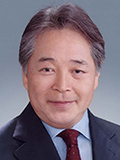Representative Greetings

The history of orthodontics dates back more than 100 years. The trend in orthodontics over the past century has been to plan a course of treatment based on what the orthodontist sees in the mouth and settle for straight teeth. A typical example of this treatment approach may be that of Invisalign. However, the upper and lower teeth are designed to fit together in a certain way, the structure responsible for which is the temporomandibular joint (TMJ). TMJ function forms the basis for the way the upper and lower teeth come together, and therefore the structure to be checked first is the TMJ. This has been largely ignored, however, as the aforementioned trend in orthodontics has continued for all these years. Our group is here to change the trend many orthodontists have blindly followed, by carefully assessing TMJ status, restoring health to the TMJ when necessary, and creating an intraoral alignment of the upper and lower teeth that is in harmony with the TMJ. There is emerging evidence that the status of the disc in the TMJ can have major impact on mandibular growth and development. This new approach to orthodontic treatment with emphasis on TMJ health should be the mainstream of orthodontics in the future, and our group will stay at the forefront of this new growing wave.
Kazumi Ikeda

In the past the orthodontic profession talked about the Roth philosophy. I have said it many times myself, but a definition of the philosophy was hard to put in words. This past year I think I finally understand what the philosophy is and what Dr Roth was really trying to teach. My take on just what the entity, we are trying to get the American Orthodontic profession to accept, can be stated in two words: "Stomatognathic harmony". There is a lot of work to be done to get the orthodontic profession to accept this concept. There is only one group of Roth trained orthodontist who are capable of changing the past and improving the future for our patients. That is the RSCI group. It has been a great pleasure being involved with this group. All of you who attend can be very proud of yourselves. Why? Because you can demonstrate your expertise by showing your cases. I am looking forward to the meeting in Orlando so I can learn from all of the attendees. As B.B. McCollum says "The work of the dentist is not in alleviating the well established pathological conditions, but in being able to discern by his diagnostic methods those incipient and potential diseases that mark us as the victims of degenerative processes."
Ted Freeland


